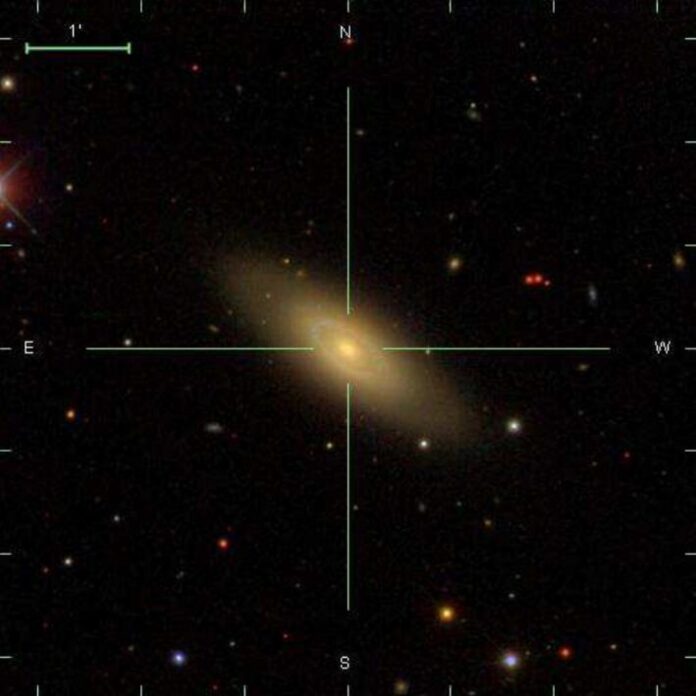Russian astronomers used the Caucasus Mountain Observatory to investigate NGC 4324, a nearby lenticular galaxy. They discovered young star-forming complexes in this galaxy’s inner ring. The findings, which were published on arXiv.org on October 14, may help us understand the formation and evolution of NGC 4324.
NGC 4324 (also known as UGC 07451) is an early-type lenticular galaxy about 66,000 light years in size, located 85 million light years away in the constellation Virgo. It has a stellar mass of approximately 56 billion solar masses, with a total mass estimated to be at least ten times greater.
Previous observations of NGC 4324 revealed a significant amount of gas as well as its remarkable structure a bright blue ring of star formation embedded in a large-scale stellar disc typical of lenticular galaxies.
A team of astronomers from Russia’s Lomonosov Moscow State University, led by Irina Proshina, examined the pattern of star formation in NGC 4324’s ring. They used the Caucasus Mountain Observatory’s 2.5-m telescope for this purpose. Archival images from the SDSS, GALEX, and WISE surveys were used to supplement the research.
“We decided to use the MaNGaL instrument—a mapper with a tunable filter—to take full images of the galaxy NGC 4324 in narrow photometric bands centred on the H and [NII]6583 emission lines…. The observations were made with the 2.5-m telescope at the Caucasus Mountain Observatory on April 17, 2018 “The researchers wrote about it in their paper.
The study discovered 18 young star-forming complexes (clumps) with an average size of about 1,600 light years. The largest clumps had estimated stellar masses of up to 10 million solar masses.
The findings indicate that the starbursts in these clumps began relatively recently—within the last 10 million years. The astronomers explained that stars that could have formed during a previous starburst about 200 million years ago cannot now contribute to the far-ultraviolet (FUV) luminosity because they have already exploded, or their luminosity peak has now shifted to the near-ultraviolet (NUV), resulting in the observed dip in the FUV of the clumps.
According to the study, the distribution of star-forming complexes in the ring of NGC 4324 is regular. This implies that the physical star formation mechanisms in spiral and lenticular galaxies are the same on local scales. “Clumps form in the ring as a result of gravitational instability, which ignites star formation. The shock waves from evolving complexes of massive OB stars—the first formed clusters of young stars in the gaseous clumps—are most likely the subsequent star formation triggers in the gaseous ring. Furthermore, the impact of a satellite or a massive gas cloud onto the galactic disc can trigger another starburst. Thus, the chain of ‘gaseous clumps—star complexes’ observed by us is a chain of star formation propagation in both space (the ring) and time ” the paper’s authors explained.

